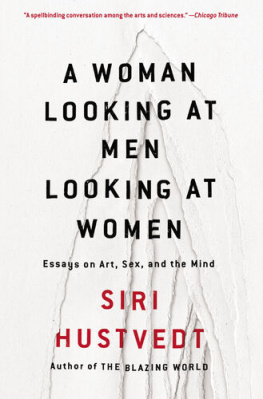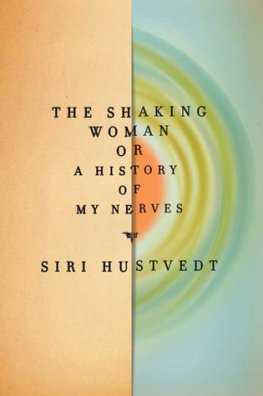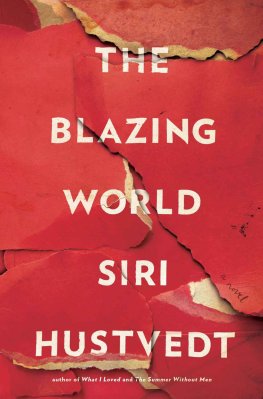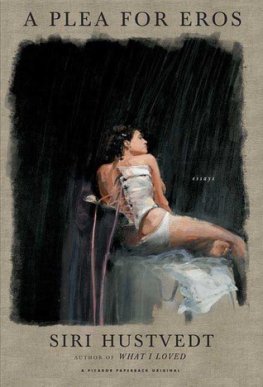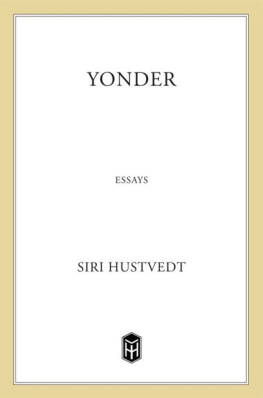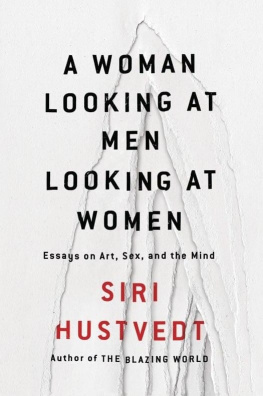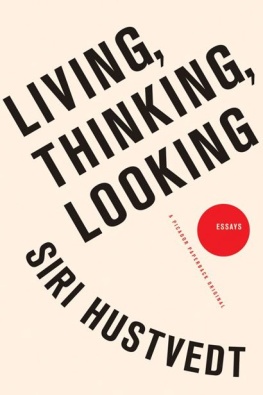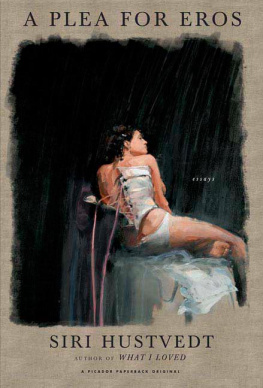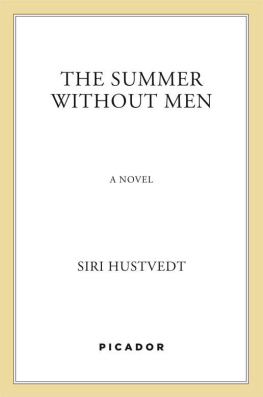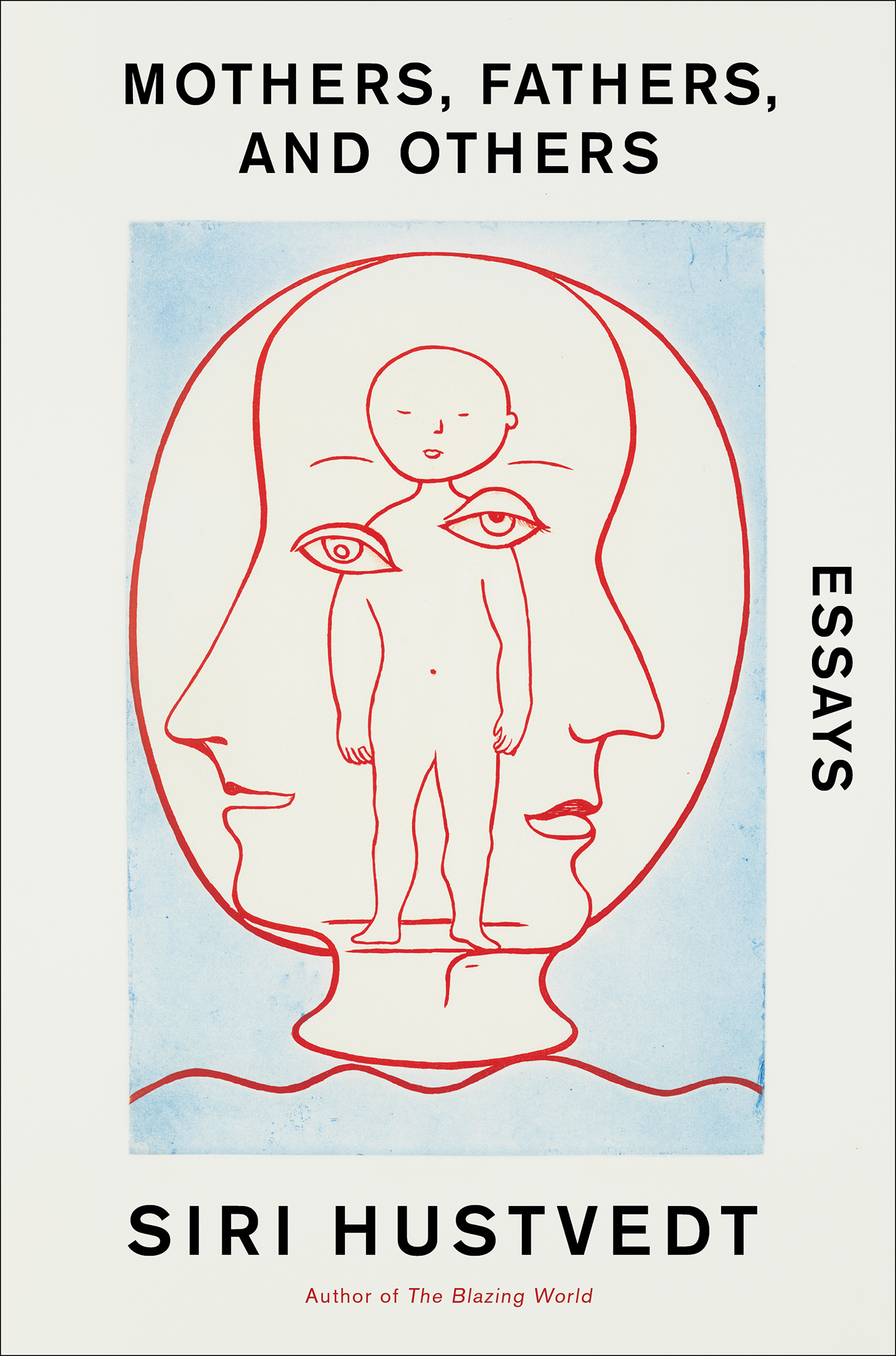Contents
Guide
Mothers, Fathers, and Others
Essays
Siri Hustvedt
Author of The Blazing World
ALSO BY SIRI HUSTVEDT
Memories of the Future
The Delusions of Certainty
A Woman Looking at Men Looking at Women
The Blazing World
Living, Thinking, Looking
The Summer Without Men
The Shaking Woman or a History of My Nerves
The Sorrows of an American
A Plea for Eros
Mysteries of the Rectangle
What I Loved
Yonder
The Enchantment of Lily Dahl
The Blindfold
Reading to You

Simon & Schuster
1230 Avenue of the Americas
New York, NY 10020
www.SimonandSchuster.com
Copyright 2021 by Siri Hustvedt
Louise Bourgeois SELF PORTRAIT, 19901994
Dry point, etching and acquatint on paper
27 x 9 1/2"; 68.6 x 42.5 cm.
Photo: Christopher Burke
The Easton Foundation / VAGA at Artists Rights Society (ARS), NY
All rights reserved, including the right to reproduce this book or portions thereof in any form whatsoever. For information, address Simon & Schuster Subsidiary Rights Department, 1230 Avenue of the Americas, New York, NY 10020.
First Simon & Schuster hardcover edition December 2021
SIMON & SCHUSTER PAPERBACKS and colophon are registered trademarks of Simon & Schuster, Inc.
For information about special discounts for bulk purchases, please contact Simon & Schuster Special Sales at 1-866-506-1949 or .
The Simon & Schuster Speakers Bureau can bring authors to your live event. For more information or to book an event, contact the Simon & Schuster Speakers Bureau at 1-866-248-3049 or visit our website at www.simonspeakers.com.
Interior design by Carly Loman
Jacket design by Natalia Olbinski
Jacket artwork: Louise Bourgeois Self Portrait, 19901994
Dry Point, Etching and Aquatint on Paper
27 X 19 1 /2"; 68.6 X 49.5 cm. Photo: Christopher Burke The Easton Foundation / Vaga at Artists Rights Society (ARS), NY
Library of Congress Cataloging-in-Publication Data has been applied for.
ISBN 978-1-9821-7639-6
ISBN 978-1-9821-7641-9 (ebook)
PREVIOUS PUBLICATIONS, LECTURES, AND SUNDRY ORIGINS
Stones and Ashes was first published in Heide Hatry, Icons in Ash, (Barrytown, NY: Station Hill Press, 2017), 24347.
A shorter version of A Walk with My Mother was written for Sommar i P1, annual summer programming on https://severigesradio.se, the national radio channel, August 2020.
States of Mind appeared as State of Mind: A Mingling in Granta 140, 2017, 5557.
Mentor Ghosts was written for an essay collection edited by Nancy K. Miller and Tahneer Oksman, Two Way Street: Feminists Reclaim Mentorship, not yet published.
Open Borders is a revised version of a speech delivered at the Guadalajara International Book Fair, December 2, 2019.
Notes from New York was published as I Think of the Sirens as New Yorks Heartbreaking Music, Financial Times Magazine, April 24, 2020.
Reading During the Plague appeared online at Literary Hub as Fairy Tales and Facts: Siri Hustvedt on How We Read in a Pandemic, April 13, 2020.
When I Met You I Saw Myself as Another was written for the annual Tbinger Poetik-Dozentur, 2016, held at the University of Tbingen in Germany. The text appeared in a book: Siri Hustvedt and Vittorio Gallese, Fhlen, Errinern, Schreiben zwichen Wissenschaft und Poesie, Tbinger Poetik Dozentur 2016, edited by Dorothee Kimmich and Alexander Philipp Ostrowicz (Knselsau, Germany: Swiridoff, 2017).
An earlier version of The Future of Literature was delivered as a talk at Litteraturhuset in Oslo, Norway, on September 5, 2017. It was published as a booklet: Siri Hustvedt om Literaturens Fremtid (Oslo: Litteraturhuset, 2018). It was also published as a not-for-sale booklet, El poder de la literature (Barcelona: Seix Barral, 2019).
The Sinbad Variations: An Essay on Style was published as a book with photographs by Reza Deghati in Spain, Ocho viagos con Sinbad (Madrid: La Fabrica, 2011), and in a French edition as Au pay des mille et une nuits (Arles, France: Actes Sud, 2011).
He Dropped His Pen was the introduction to Jane Austen, Persuasion (London: Folio Society, 2016).
Visiting St. Francis was titled Learning to See What Is in Front of Me, written as a Meditative Story podcast, a partnership between WaitWhat and Thrive Global, released December 2, 2019.
Both-And is a revised, much longer version of a talk given at the Museum of Modern Art in New York City for an evening event: New Perspectives on Louise Bourgeois: A Conversation with Juliet Mitchell and Siri Hustvedt, November 7, 2017.
What Does a Man Want? began as a seven-page entry on misogyny as part of a dictionary on social passions, Passions Sociales, edited by Gloria Origgi (Paris: Presses Universitaire des France, 2018) 401408.
TILLIE
My paternal grandmother was ornery, fat, and formidable. She cackled when she laughed, brooded for reasons known only to her, barked out her sometimes alarming opinions, and spoke a Norwegian dialect impenetrable to me. Although she was born in the United States, she never mastered the th sound in English and opted for a straight t instead, referring to tings and tunderstorms and Tanksgiving. When I was a child her hair was thick and white, and when loose, it fell almost to her waist. Before I knew her, it had been auburn. It thinned over the years, but I remember my awe when I saw it down. That happened only at night after she had unpinned her bun in front of the hazy mirror in the tiny, musty, mildewed bedroom of the farmhouse where she lived with my grandfather, who had his own even smaller room under the eaves just up the narrow wooden steps on a floor we were rarely allowed to visit. Once her hair had fallen and her nightgown was on, my grandmother took out her teeth and put them in a glass by the bed, an act that fascinated me and my sister Liv because we had no body parts that could be removed at night and replaced in the morning.
The extractable teeth, however, were only one piece of an altogether marvelous, if sometimes intimidating, being. Our grandmother peeled potatoes with a paring knife at what seemed to me the speed of light, hauled logs from the woodpile near the house, and yanked open the heavy door to the root cellar with a single gesture as strong as any mans before she led us down to the cold, dank domain where canned goods stood in their glass jars on shelves lined up against earthen walls. It was a place that smelled of the grave, a thought that may or may not have occurred to me then, but the excursion was always accompanied by a whiff of threatby the fantasy that I would be left below with the jars and the snakes and the ghosts in blackness.
She was the only grown-up we knew who enjoyed telling poop jokes. She rocked with laughter over our plop-plop funnies as if she were a child herself, and when she was in a good mood, she told us stories from the long lost days of her own childhood, how she had learned to turn handsprings and cartwheels and walk on a wire and how she and her brothers hoisted sails on their sleds and were blown hard and fast across the frozen lake near the farm where she grew up. Before we went visitinga word that signaled we were about to hop in the old Ford and call on various neighborsGrandma put on her straw hat with the flowers on it that hung on a hook inside the front door and grabbed her black handbag with the gold clasp that had her little coin purse inside it, and we were off.

